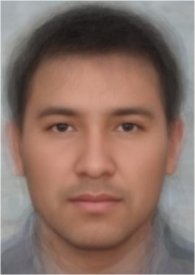




|
The nasal index is the ratio of nasal breadth to nasal length. It varies greatly among different anthropological groups and in different climate zones. In dry climates, noses often (not always) tend to be narrower. E.g. from Arabia to West Asia, as well as North and East Africa. This may be because narrow noses have a better dust-filtering function, and the risk of dehydration of the nasal mucosa is lower. An even more significant pattern is the high frequency of narrow noses in cold climate. It has been suggested that longer, narrower noses can better heat and moisten inhaled air in cold climate (Thomson's Nose Rule). When a person inhales, more air comes into contact with the mucosal surface of the nose, which provides moisture, and a narrow nose maximises the surface area. In humid, hot climate, noses are often wide. Without any restrictions like cold or dusty air this is simply the most efficient nose for breathing. Unfortunately, the nasal indices published by different authors are not always comparable, because of different measuring techniques. This is sometimes ignored. While on the skull the measurement of the craniological index is common, for living individuals various techniques exist. German anthropologists often used the morphological nasal index, Italian anthropologists the physiognomic nasal index. The table below shows the most commonly used nasal indices and the classification into narrow (leptorrhine), medium-wide (mesorrhine) and wide (platyrrhine or chamaerrhine). Nasal index classification of different measuring techniques:
The maps show regions where a specific nasal index is dominant in native populations. On an individual level, it may regularly appear in the black areas as well. |
 |
 |
 |
 |
 |
| hyperleptorrhine (very narrow) | leptorrhine (narrow) | mesorrhine (medium-wide) | platyrrhine (wide) | hyperplatyrrhine (very wide) |